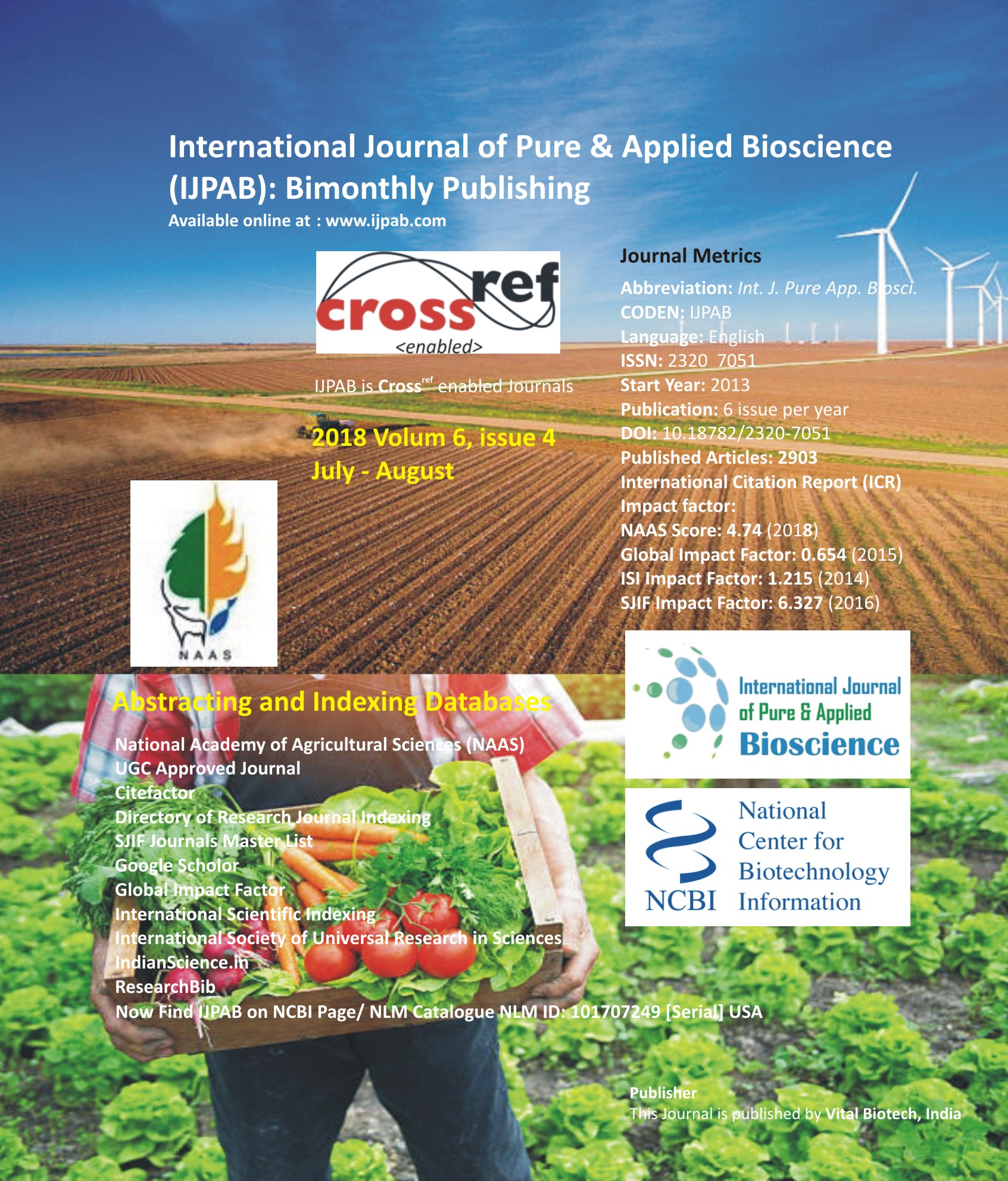
-
No. 772, Basant Vihar, Kota
Rajasthan-324009 India
-
Call Us On
+91 9784677044
-
Mail Us @
editor@ijpab.com
International Journal of Pure & Applied Bioscience (IJPAB)
Year : 2018, Volume : 6, Issue : 4
First page : (521) Last page : (526 )
Article doi: : http://dx.doi.org/10.18782/2320-6902
Twig Blight of Chilli Caused by Choanephora cucurbitarum in Telangana
J. Chandrakala* and B. Vidyasagar
College of Agriculture, Professor Jaya Shankar Telangana State Agricultural University Rajendranagar, Hyderabad-500030, Telanagana, India
*Corresponding Author E-mail: chandrakala.j91@gmail.com
Received: 6.07.2018 | Revised: 17.08.2018 | Accepted: 25.08.2018
ABSTRACT
In December 2014 twig blight on chilli (Capsicum frutescens) caused by Choanephora cucurbitarum was observed during survey in farmer’s fields in major chilli growing areas of Telangana state. The symptoms of Choanephora twig blight of chilli were observed under natural field condition on leaves, stem, petioles and fruits during survey. Isolation was done from the plant parts and showed presence of Choanephora cucurbitarum which was identified on the basis of its morphological characters. Twig blight disease caused by the pathogen Choanephora cucurbitarum was identified based on morphological and cultural characters.
The disease began with water-soaking and dark-green lesions, and then the infected tissues were rapidly rotten. The drooping multisporous sporangia were subglobose in shape and 90.15 - 100 μm in size. Sporangiospores were elliptic, fusiform or ovoid in shape, light brown or dark brown in color and are characterized by longitudinal striatures on the wall surface and 12-19 x 7.23-9.5 μm by size. The sporangiophore (conidiophore) from which the monosporous sporangiola arose was long slender, branched at the apex with primary vesicle from which secondary vesicles were produced on the stalks which bears sporangiospores (conidia). Monosporous sporangiola were elliptical, fusiform or ovoid, striate and measured 11-19 × 4-12 μm. Zygospores of C. cucurbitarum appear not to have been observed prior to the present study. The pathogenicity of fungus was tested and Koch’s postulates were confirmed. Symptoms first appeared as water soaked lesion on leaves and stems. The infected portion dries and curls up and rapidly extends downward, attacking buds and tender leaves. Prominent hairy growth of Choanephora cucurbitarum on the infected tissue was found in the morning hours.
Key words: Choanephora cucurbitarum, Twig blight, Chilli, Sporangiospores, Pathogenicity.
Full Text : PDF; Journal doi : http://dx.doi.org/10.18782
Cite this article: Chandrakala, J. and Vidyasagar, B., Twig blight of chilli caused by Choanephora cucurbitarum in Telangana, Int. J. Pure App. Biosci.6(4): 521-526 (2018). doi: http://dx.doi.org/10.18782/2320-7051.6902

